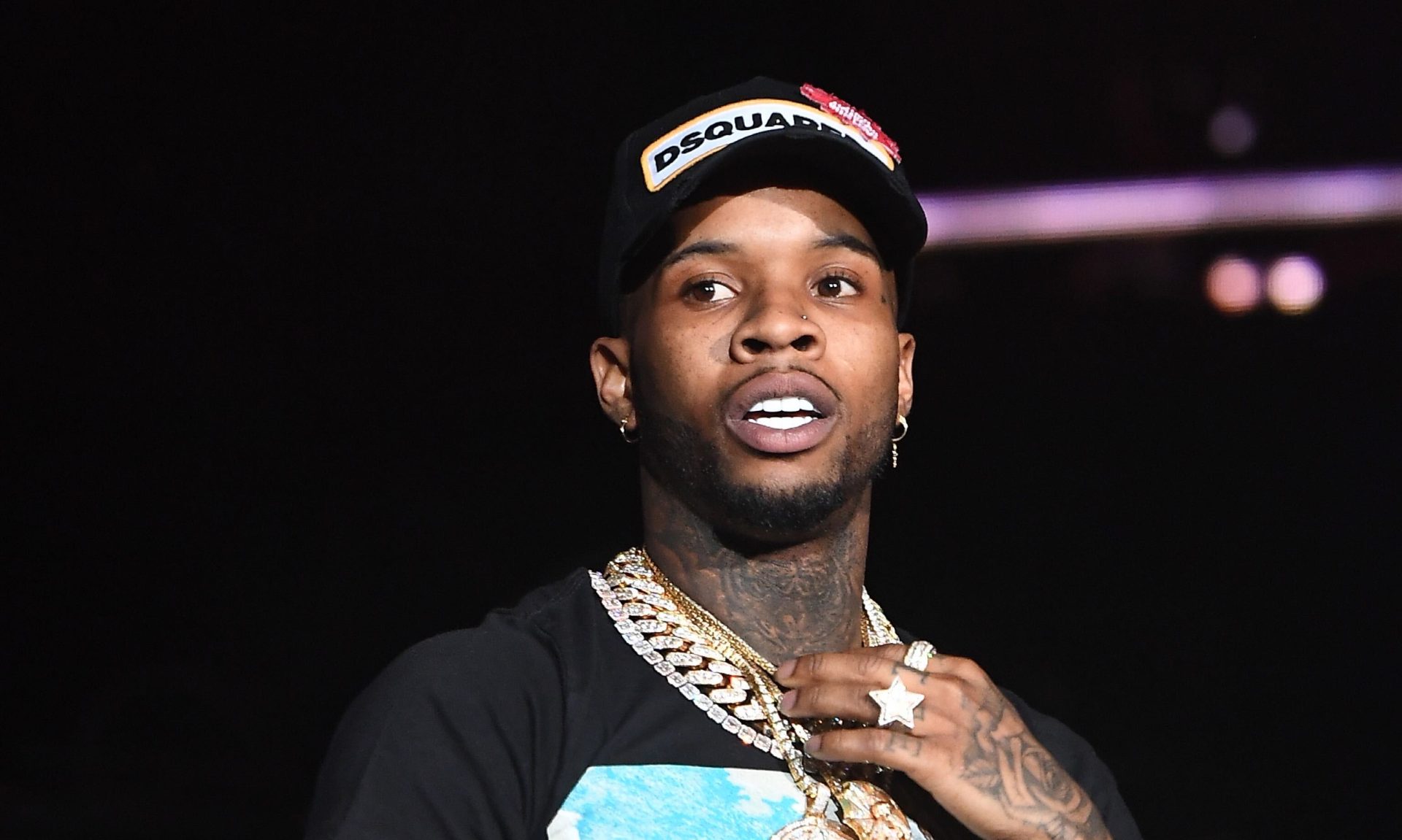What Do Lawyers Think About the Tory Lanez Case? The Tory Lanez case has been a firestorm of legal complexities, public scrutiny, and cultural conversations. But beyond the chatter of fans and media pundits, there exists a more nuanced, analytical viewpoint — the lawyer’s perspective on Tory Lanez case. Legal experts have dissected the intricacies of the trial, the evidentiary challenges, and the broader implications this case holds for the justice system.
This exploration offers a deep dive into how attorneys, legal analysts, and courtroom veterans interpret this high-profile spectacle. Their observations illuminate not just the case itself but the architecture of celebrity justice in America.

The Legal Foundation: Charges and Their Weight
To fully comprehend the lawyer’s perspective on Tory Lanez case, it is crucial to examine the formal charges levied against him. Lanez faced felony counts, including assault with a semi-automatic firearm, personal use of a firearm, and carrying a loaded, unregistered firearm in a vehicle. Each charge carried its own evidentiary burden and legal significance.
Attorneys were quick to point out that these are not mere technicalities. Assault with a firearm, in particular, demands a rigorous standard of proof — establishing intent, causation, and actual bodily harm. For many legal experts, this elevated the case from a routine celebrity scuffle to a litmus test of prosecutorial diligence.
Furthermore, legal analysts emphasized how California’s gun laws, notoriously stringent, framed the severity of the charges. In their view, the application of these statutes reflected a broader societal imperative to curb gun violence, even among the glitterati.
Evidentiary Minefields: Proof Beyond a Reasonable Doubt
From a lawyer’s perspective on Tory Lanez case, the crux of the matter hinged on evidence. This was no open-and-shut scenario. Prosecutors bore the Herculean task of convincing a jury beyond a reasonable doubt, while defense attorneys aimed to sow seeds of uncertainty.
The case was riddled with evidentiary pitfalls. For instance, gunshot residue tests, DNA swabs, and eyewitness accounts all became battlegrounds for legal interpretation. Lawyers scrutinized the forensic evidence with surgical precision, debating its admissibility, chain of custody, and scientific reliability.
Defense attorneys questioned whether the forensic evidence irrefutably linked Lanez to the firearm discharge. They probed for procedural lapses, arguing that contamination or mishandling could undermine the prosecution’s narrative. On the flip side, prosecutors presented expert witnesses who meticulously explained ballistic trajectories and injury patterns.
Legal commentators noted that this evidentiary tug-of-war epitomized the adversarial nature of American jurisprudence. It wasn’t just a celebrity trial; it was a masterclass in evidence law.
Witness Credibility: The Double-Edged Sword
One of the most hotly debated elements in the lawyer’s perspective on Tory Lanez case was the credibility of witnesses, especially Megan Thee Stallion. Lawyers underscored that in cases of personal assault, the victim’s testimony often becomes the linchpin.
Megan’s recounting of the events was emotionally charged, raw, and vivid. Legal experts acknowledged the power of her narrative but also dissected it for consistency, corroboration, and potential cross-examination vulnerabilities.
Defense lawyers focused on perceived inconsistencies in her statements, attempting to erode her credibility. They highlighted temporal discrepancies and behavioral nuances, suggesting ulterior motives or misinterpretations.
However, prosecutors emphasized that trauma can distort memory, a point echoed by legal psychologists. From a legal standpoint, Megan’s testimony was both potent and perilous — a double-edged sword that could sway jurors but also invite relentless scrutiny.
The Role of Social Media: A Modern Legal Battlefield
An undeniable factor in the lawyer’s perspective on Tory Lanez case is the omnipresent influence of social media. Legal experts lamented how digital platforms often blurred the lines between public opinion and judicial impartiality.
Attorneys expressed concerns about “trial by Twitter,” where snippets of courtroom proceedings were amplified, distorted, or decontextualized. In their analysis, this digital echo chamber risked contaminating the jury pool and exerting undue pressure on legal actors.
Moreover, lawyers debated the ethical ramifications of Lanez and his defense team using social media to shape public perception. While legally permissible, this strategy walked a fine line between free speech and potential jury tampering.
For many in the legal community, the Tory Lanez case became a cautionary tale of how 21st-century technology collides with 20th-century legal frameworks.
Jury Dynamics: The Unseen Calculus
From a lawyer’s perspective on Tory Lanez case, the jury’s role cannot be overstated. Legal scholars delved into the psychological undercurrents that likely influenced juror deliberations.
Jury selection itself was a meticulous process, with attorneys on both sides employing voir dire to identify favorable candidates. Lawyers analyzed potential biases, attitudes toward celebrity culture, and preconceptions about gun violence.
Once empaneled, the jurors were tasked with navigating a labyrinth of testimony, technical jargon, and emotional appeals. Legal experts speculated on how jurors might perceive the contrasting personas of Megan Thee Stallion and Tory Lanez — the survivor seeking justice versus the accused asserting innocence.
Attorneys highlighted how jury instructions, crafted by the judge, would be pivotal in guiding deliberations. The articulation of “reasonable doubt,” the framing of “intent,” and the delineation of “self-defense” all shaped the jury’s interpretive lens.
Sentencing Realities: Consequences and Considerations
With Lanez’s conviction, the conversation shifted to sentencing. The lawyer’s perspective on Tory Lanez case provided a granular analysis of what sentencing entailed.
Legal experts examined the statutory guidelines for Lanez’s offenses, considering factors such as prior criminal history, aggravating circumstances, and mitigating evidence. They also pondered the role of victim impact statements, which could influence the court’s sentencing discretion.
Some attorneys argued that Lanez’s celebrity status might result in harsher sentencing to set a public example. Others contended that judicial impartiality would ensure a sentence commensurate with the evidence, devoid of media sensationalism.
Moreover, lawyers debated the prospects of probation, alternative sentencing programs, or potential appeals that could delay or alter the final outcome.
Appeal Strategies: Legal Recourse for the Convicted
The post-conviction phase invited a flurry of legal speculation. From a lawyer’s perspective on Tory Lanez case, appeals were not just probable but inevitable.
Defense attorneys would likely challenge procedural aspects of the trial, such as evidentiary rulings, jury instructions, or alleged prosecutorial misconduct. Appeals would focus on legal errors rather than factual disputes, a distinction often misunderstood by the public.
Legal scholars discussed the arduous nature of appellate review, emphasizing that overturning a conviction requires demonstrating that trial errors substantially influenced the verdict. Merely disagreeing with the jury’s conclusions would not suffice.
Some legal analysts suggested that Lanez’s team might also explore post-conviction relief avenues, such as claims of ineffective assistance of counsel or newly discovered evidence. However, these strategies would face steep judicial scrutiny.
Broader Legal Implications: Celebrity, Justice, and Public Perception
Beyond the immediate facts, the lawyer’s perspective on Tory Lanez case offered a broader reflection on the intersection of celebrity and justice. Legal experts argued that the case highlighted systemic issues within the criminal justice system.
One recurrent theme was the challenge of ensuring fair trials in the age of instant information and viral narratives. Lawyers stressed the need for judicial reforms that address the influence of social media on legal proceedings.
Additionally, the case reignited conversations about gender dynamics in the courtroom. Legal commentators pointed out how female victims, particularly Black women, face unique hurdles in achieving credibility and justice.
The Tory Lanez case also sparked debates about prosecutorial discretion, media ethics, and the societal thirst for public spectacles disguised as legal battles. For attorneys, these discussions underscored the need for a more measured, principled approach to high-profile cases.
The Court of Public Opinion vs. The Court of Law
A salient point in the lawyer’s perspective on Tory Lanez case is the dichotomy between legal adjudication and public sentiment. While the jury rendered a guilty verdict based on legal standards, the court of public opinion remained fragmented.
Legal experts emphasized that judicial outcomes must be grounded in evidence and legal reasoning, not swayed by popularity or cultural narratives. However, they also acknowledged the inescapable reality that celebrity trials often become proxies for larger societal debates.
Attorneys warned against conflating moral outrage with legal guilt, advocating for a clear demarcation between social justice advocacy and courtroom advocacy. The Lanez case, in their view, illustrated the perils of blurring these lines.
Closing Thoughts: A Legal Microcosm
In summation, the lawyer’s perspective on Tory Lanez case reveals a multifaceted tableau of legal strategy, evidentiary challenges, and societal implications. For the legal community, this case was more than a celebrity scandal; it was a complex legal microcosm reflecting the evolving dynamics of American jurisprudence.
Through the lens of legal professionals, the case stands as a potent reminder of the law’s enduring principles amidst the clamor of public spectacle. It underscores the meticulous craftsmanship required in litigation, the ethical boundaries of advocacy, and the relentless pursuit of justice — even when the court of public opinion clamors for swift, simplistic answers.
As the dust settles, the Tory Lanez saga will undoubtedly be dissected in legal textbooks, case studies, and courtroom seminars. For now, it remains a vivid exemplar of how the law navigates the tempestuous waters of fame, emotion, and evidence.




